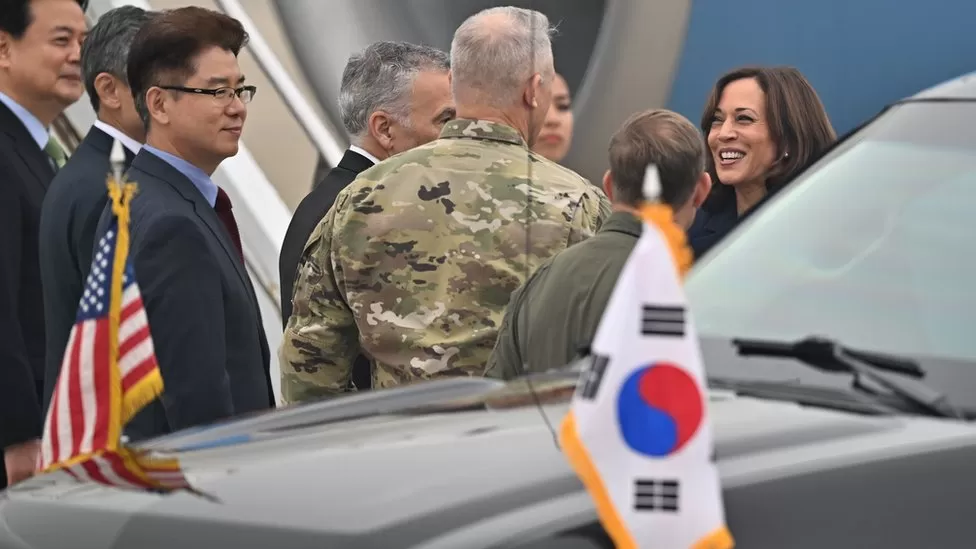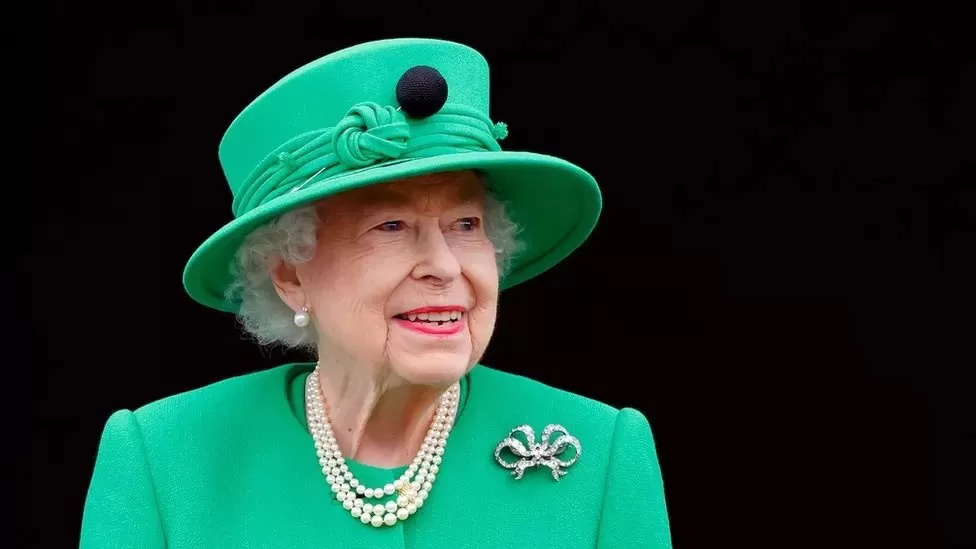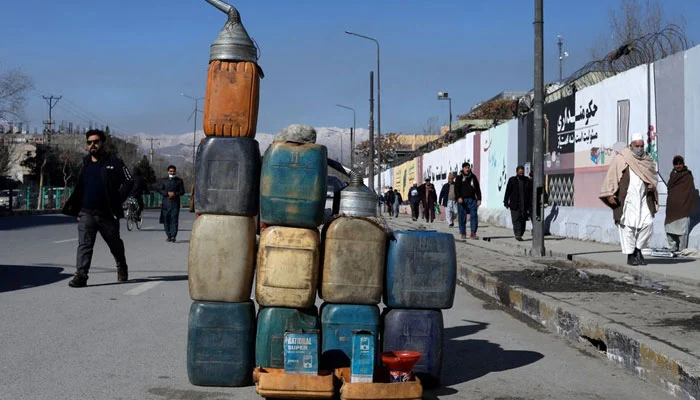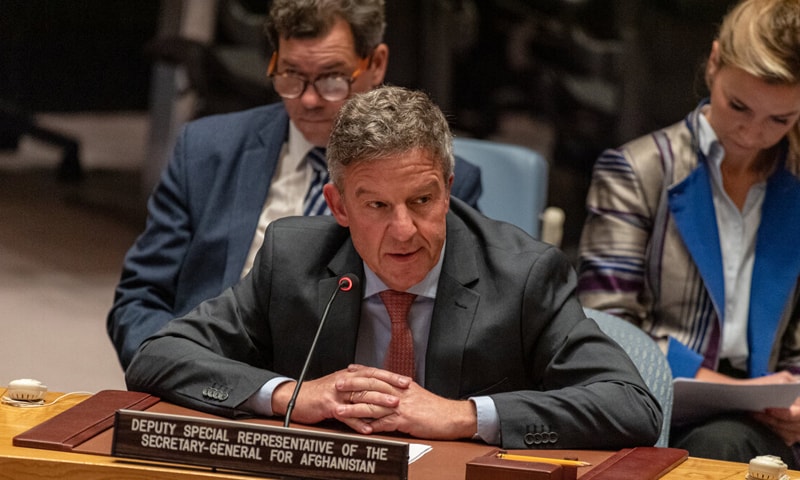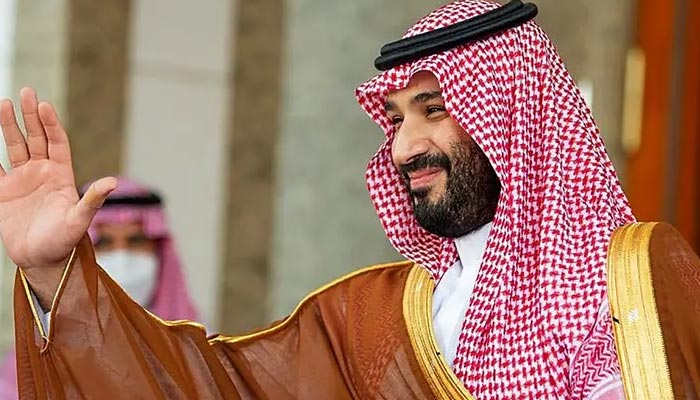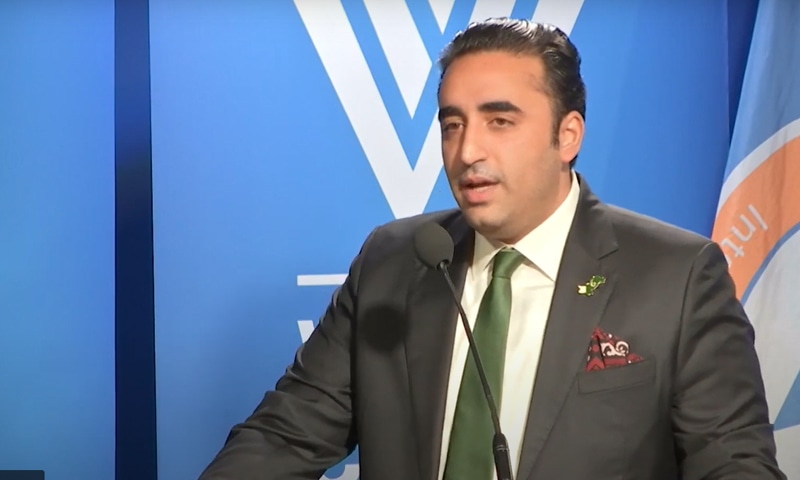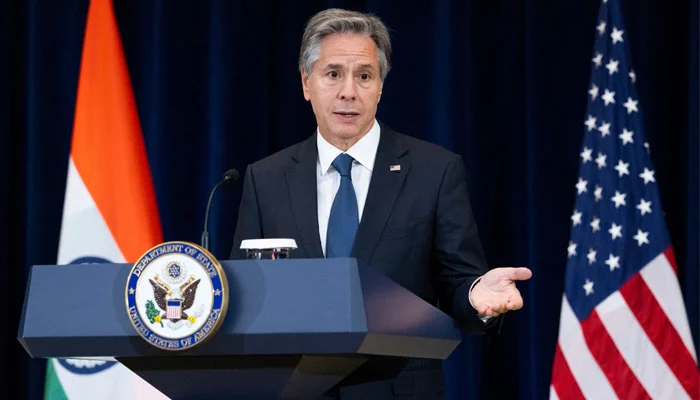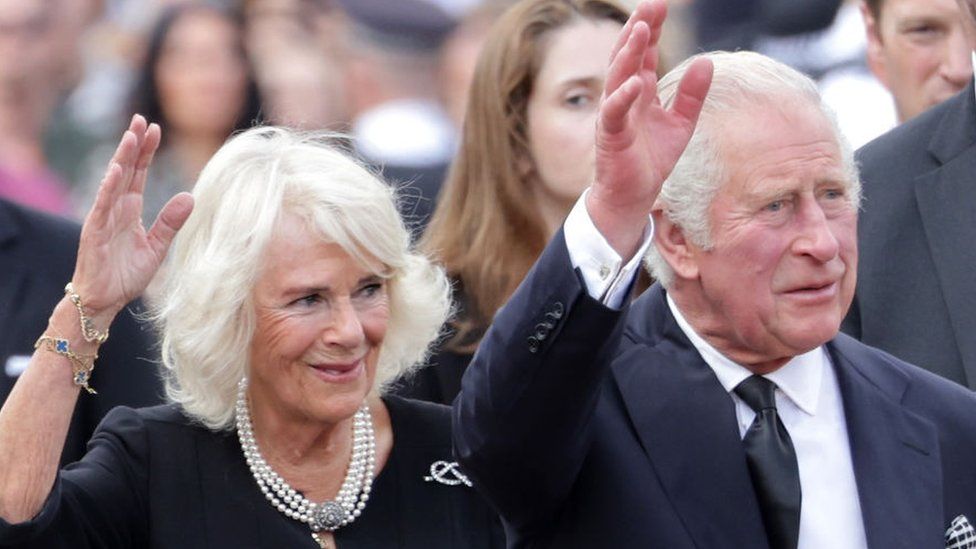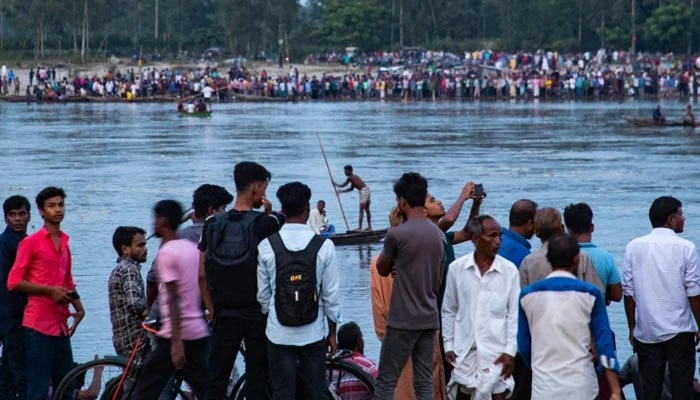The launch, which breaches UN sanctions, comes as the US and South Korea hold joint naval drills in the waters around the Korean peninsula.
South Korea and Japan officials have condemned the “provocations”.
It’s the second launch this week and part of a record year of tests by Pyongyang.
During her visit to South Korea, Ms Harris will travel to the border inside the heavily fortified Demilitarised Zone (DMZ) which separates the North and South.
On Wednesday, she addressed US troops at a military base in Japan where she condemned Pyongyang’s recent launches and its “illicit weapons programme which threatens regional stability”.
With denuclearisation talks between the North and the US deadlocked, these launches are part of a wider pattern of escalation, with Pyongyang continuing to build and refine its weapons, while Washington strengthens its defences.
This week’s launches – the earlier one was on Sunday before the naval drills began – are the first since early June, but North Korea has test launched more than 30 weapons so far this year, more than in any other single year.
South Korean authorities said Wednesday’s missiles were launched between 18:10 and 18:20 local time (09:10-09-20 GMT), and flew 360km (225 miles), reaching an altitude of 30km. Japan’s coast guard also picked up the launch.
“North Korea’s provocations will further strengthen the South Korean-US deterrence and response capability, and only deepen North Korea’s isolation from the international community,” the South Korean Joint Chiefs said in a statement.
Experts believe the launches are in retaliation to the joint naval drills as Washington and Seoul bolster their defence of South Korea – the four day joint drills are the first involving a US aircraft carrier to be held since 2017.
In a speech to the General Assembly earlier this week, Pyongyang’s ambassador to the UN Song Kim criticised the US and South Korea for their military exercises, saying they were bringing the Peninsula to “the brink of war”. He said the United States’ “hostile policy” towards North Korea was the reason the world was now “heading into a much more dangerous phase”.
South Korea and the US have long defended their joint exercises, which they say are aimed at stabilising the region.
The secretive Communist state’s assertiveness over its possession of nuclear weapons is growing – and that worries the US and South Korea.
Earlier this month, North Korea passed a law declaring itself to be a nuclear weapons state. Leader Kim Jong-un vowed his country would never give up their weapons or engage in nuclear disarmament talks.
The law also allows the North to fire first, in a wide range of scenarios. Until recently it had always claimed its weapons were a deterrent, aimed at preventing a war.
For months intelligence from the US and South Korea has suggested the North is ready to test a nuclear weapon but is waiting for the opportune political moment.
This would be its seventh nuclear test and its first for five years. Yesterday South Korea’s spy agency told politicians that the nuclear test could happen between mid-October and early November, likely seizing on a window between the Chinese Party Congress and before the US mid-term elections.
South Korea’s President Yoon Suk-yeol, who took office in May, has focused on strengthening South Korea’s alliance with the United States to tackle the threat posed by North Korea.


